Guggenheim-Winning Professor To Hold Solo Art Show in Boston
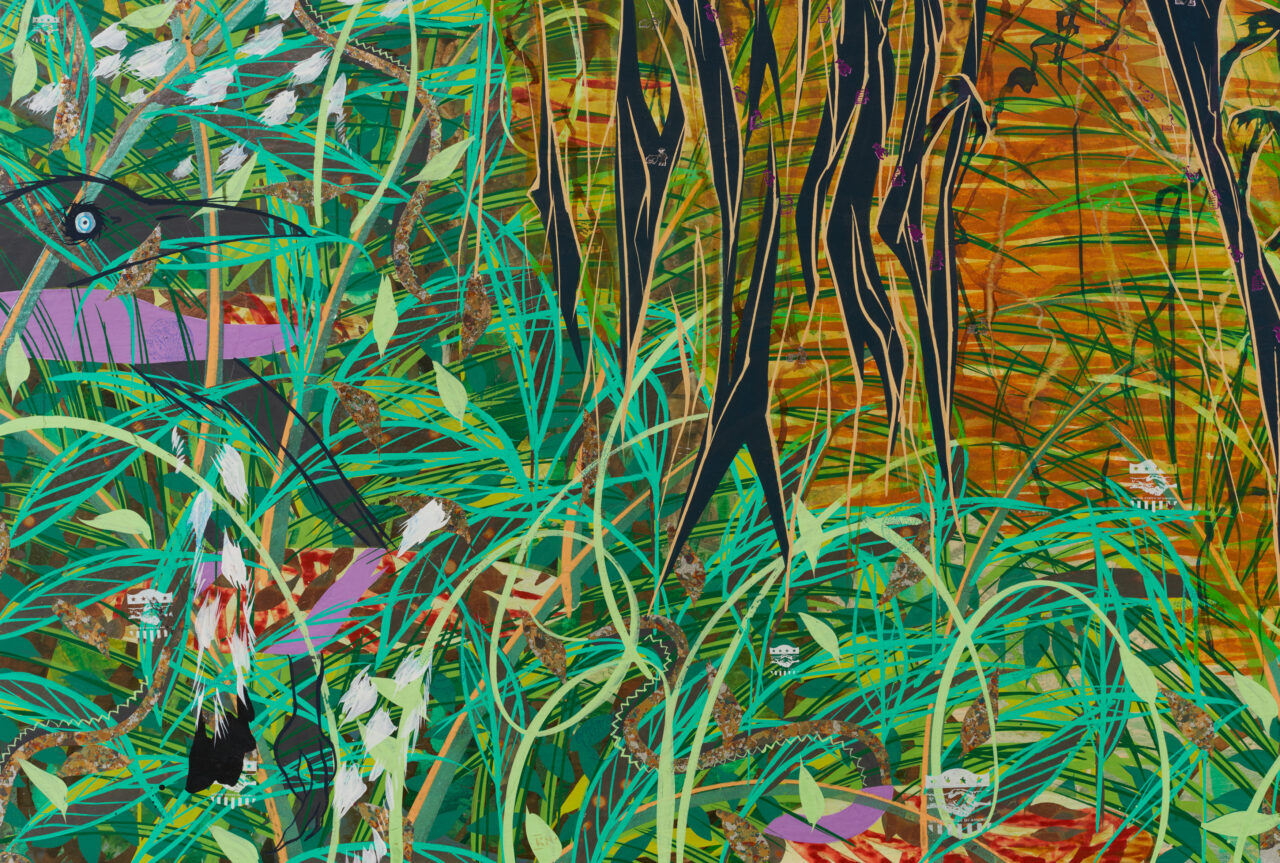
Assistant Professor of Art Tammy Nguyen will follow her recently won Guggenheim Fellowship with her first museum solo exhibition, taking place at the Institute of Contemporary Art in Boston from Aug 24, 2023 to Jan 28, 2024.
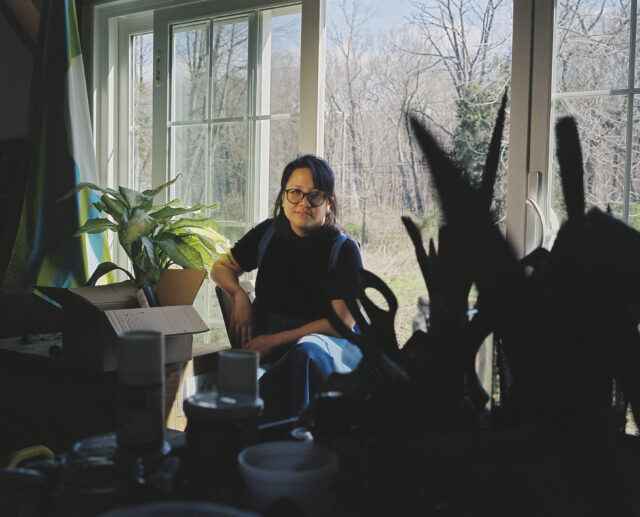
Nguyen was recognized with the Guggenheim for her work intersecting the disciplines of painting, drawing, printmaking, and bookmaking. She’s bringing the same wide-ranging approach to her newest show, inspired by Ralph Waldo Emerson’s book-length essay Nature, written in 1836 in Concord, Mass.
“I am thinking a lot about some of the essential ideas in Nature, like how does man create and extend his identity and liberty by working in nature and transforming it from a wilderness to an idea of landscape,” Nguyen said.
According to the ICA website, Nguyen’s exhibit maps the lasting impact of Emerson’s writing on still commonly held ideas about nature and landscape, especially through a studied consideration of land reform programs in Vietnam during the Vietnam War.
She took a break from working in her Connecticut studio to chat with the Wesleyan Connection about the recognition, the inspiration for her work, and how working at the University informs her artistic practice.
WC: What does getting a recognition like a Guggenheim Fellowship do for your career?
The Guggenheim Fellowship is an incredible honor. I think the Guggenheim community is able to bring together people who have different perspectives and disciplines in a spirit of research and scholarship that I think is invaluable. The Guggenheim has been around for so long that it is a kind of arsenal of scholars and artists, which is now a striking list, and community to collaborate with.
WC: What made you decide to want to become an artist in the first place?
I think it’s a little bit of a one foot in front of the other kind of story. I was always really excited about making art from an early age. From my earliest memories, I’ve always really liked to draw and play with materials. As I grew up, I felt affirmed by various teachers and mentors. I was given more paper and crayons, then I got an award here and there, and then I got an opportunity to make something special, and so forth. Little by little, my excite for art grew into a real passion I wanted to pursue professionally. But, I wasn’t always so sure that it would work out. Being an artist is a little bit like a dream. It’s such a dream to be able to make art and to make a living as an artist, to ask questions about the world and to explore those queries creatively.
I don’t even know if art was something that I decided to so much as it was more like I worked at it and got really lucky at different points in my life from the teachers who taught me and the schools I went to. Like I said, one foot in front of the other, one step at a time.
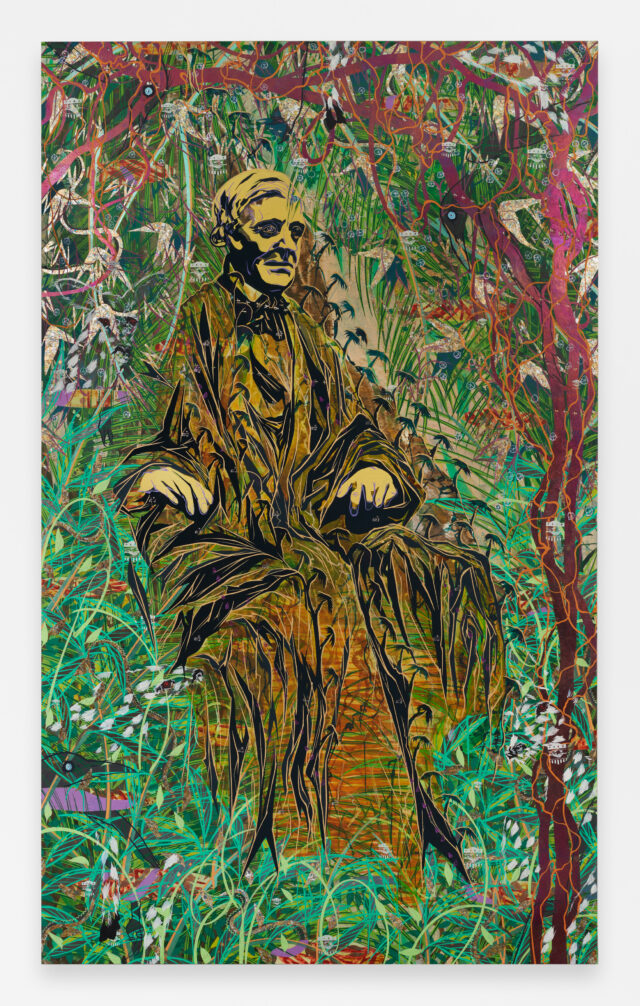
Watercolor, vinyl paint, pastel, and metal leaf on paper stretched over panel
100 x 60 x 2 inches / 254 x 152.4 x 5.1 cm
© Tammy Nguyen. Courtesy the artist and Lehmann Maupin, New York, Hong Kong, Seoul, and London.
Photo by Izzy Leung.
WC: What are you working on now?
There’s a lot happening. I am working on my first museum solo, opening August 24 at the ICA in Boston. It’s a show inspired by Ralph Waldo Emerson’s Nature and compares some of the essential ideas in the essay to land reformation efforts in South Vietnam during the Vietnam War that were supported by the United States. I’m interested in nature and the environment, and also how American ideals of working hard, independence, liberty, and manifest destiny carved into the American psyche and then expressed through American soft power and foreign policy abroad. I am also interested in how land and territories shift between people and how they different societies and cultures evolve around those boundarties. I’m thinking a lot about some of the essential ideas in Nature, such as how does man create and extend his identity and liberty by working in nature? How can nature transform from the idea of a wilderness into an idea of landscape? How then does man establish his sense of God and church separate from the British monarch in this new America?
WC: What do you hope a viewer takes away from your work?
I think that there are a lot of different experiences viewers can have with my artwork. So one thing that is important to the practice, which isn’t always appreciated depending on where you see my artwork, is that my three ways of working offer different viewing experiences. There’s the paintings. There’s the printmaking practice where I make works on paper or collages. Then there’s the artist book practice, which offers different ways of reading into my subject matters. When you have text, you have a different set of opportunities to reach your viewers in a didactic and literary way. That kind of experience doesn’t happen in my paintings, which is much more experiential. The paintings are very lush, and they often include lush subjects such as tropical vegetation. There’s a good amount of gilding and a ton of color. These paintings offer much more emotional experiences than the paperworks or artist books. But, as you approach the paintings closely, you might see symbols or icons that are unfamiliar. Hopefully that inspires the viewer to look it up or look for it in the artist books or works on paper. I want the paintings to give viewers a fulfilling experience from 20 feet away, from 10 feet away, from one inch away.
WC: How does working at the university help inform your art?
I think that being an artist and a professor suits my practice that thrives so much on research and learning from across disciplines. Being a part of a research and learning environment such as Wesleyan makes for a very rich artistic ecosystem. But, the best and coolest about teaching at Wesleyan are the students – they are awesome. They’re so optimistic, curious and willing to experiment. They are an inspiration to me and I try to keep that energetic spirit alive in my studio.
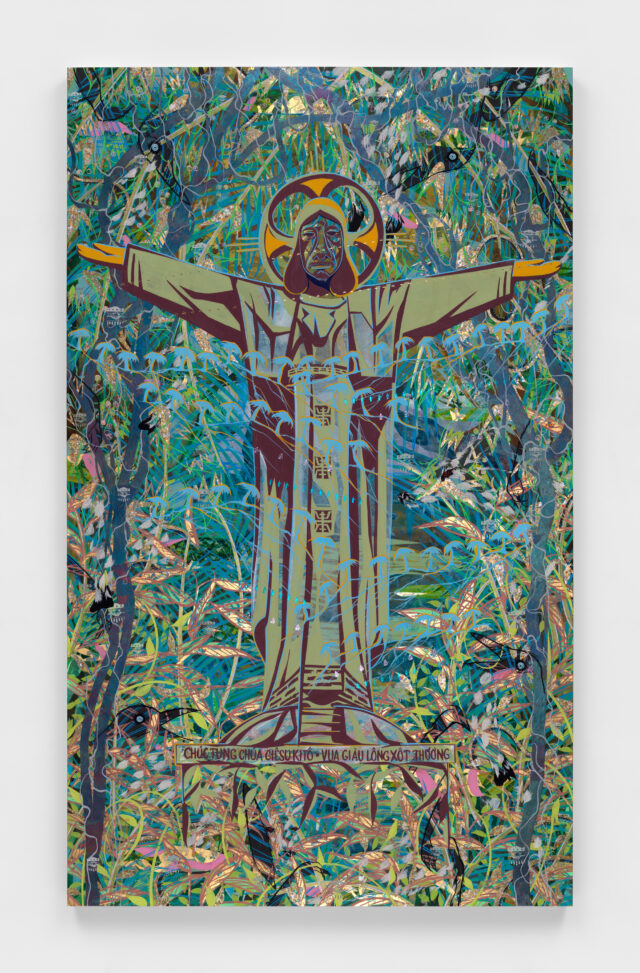
Watercolor, vinyl paint, pastel, and metal leaf on paper stretched over panel
100 x 60 x 2 inches / 254 x 152.4 x 5.1 cm
© Tammy Nguyen. Courtesy the artist and Lehmann Maupin, New York, Hong Kong, Seoul, and London.
Photo by Dan Bradica.
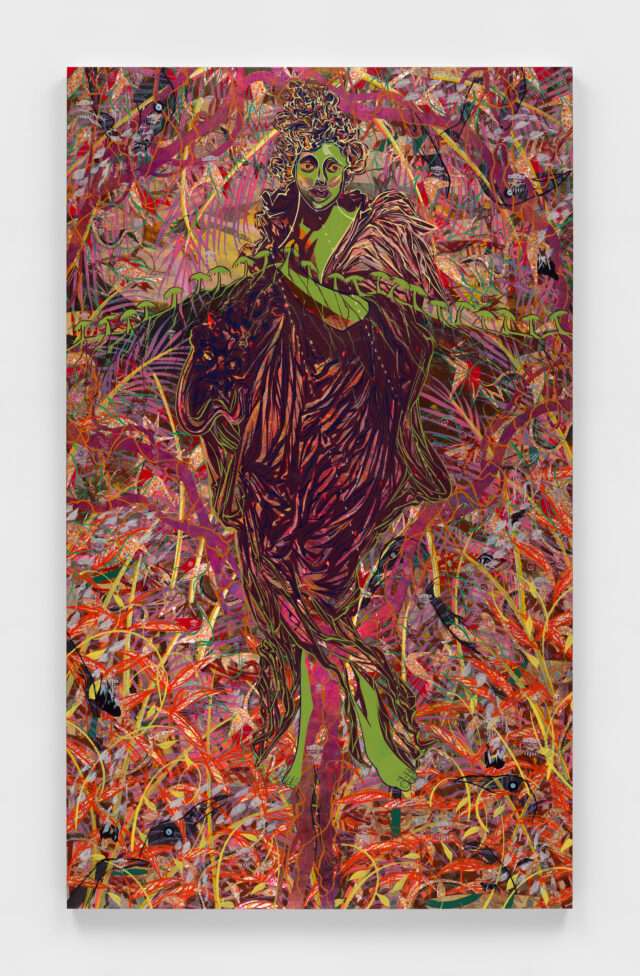
Watercolor, vinyl paint, pastel, and metal leaf on paper stretched over panel
100 x 60 x 2 inches / 254 x 152.4 x 5.1 cm
© Tammy Nguyen. Courtesy the artist and Lehmann Maupin, New York, Hong Kong, Seoul, and London.
Photo by Dan Bradica.
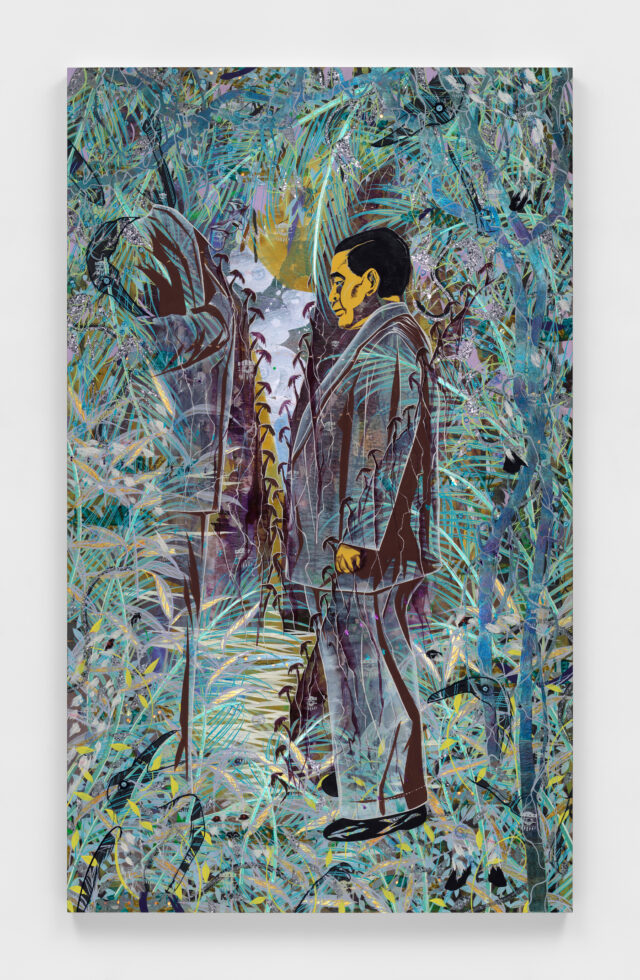
Watercolor, vinyl paint, pastel, and metal leaf on paper stretched over panel
100 x 60 x 2 inches / 254 x 152.4 x 5.1 cm
© Tammy Nguyen. Courtesy the artist and Lehmann Maupin, New York, Hong Kong, Seoul, and London.
Photo by Dan Bradica.

